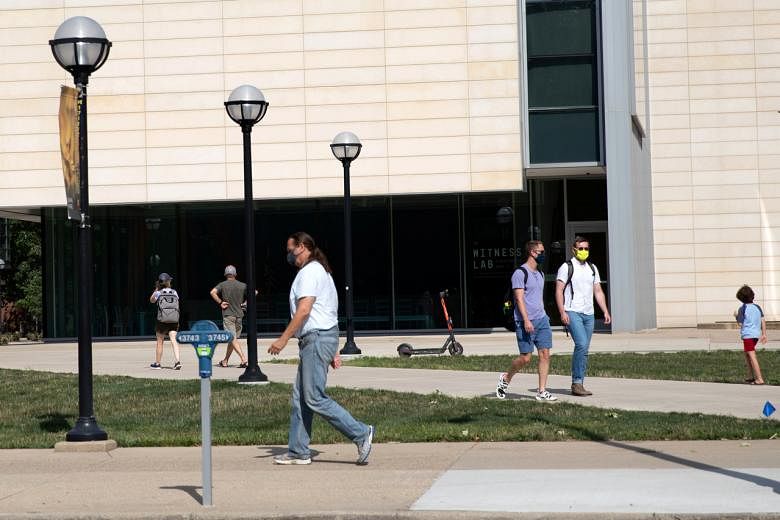Students and their families often focus on tuition and fees when budgeting for college. But there are costs that typically do not appear on college bills, and they can add up - costs such as books, laptop computers, transportation, off-campus housing and meals.
These indirect costs can make up half or more of the cost of attending some colleges in the United States, and may trip up families who are not anticipating them to be so expensive, concluded a report from uAspire, a non-profit group that promotes college affordability.
Ms Laura Keane, chief policy officer at uAspire, said: "It creates considerable stress for students." The financial burden on students has been growing over the past decade, and will be compounded by the economic impacts of the pandemic.
Even after loans and grants were applied to eligible students, the shortfall could come up to about US$12,000 (S$16,470), leaving them struggling to make ends meet.
"So much attention is paid to tuition, but students also need to have money to live on while in college," said Dr Robert Kelchen, associate professor of higher education at Seton Hall University who has studied indirect college cost estimates. "The biggest surprise is how much of the cost it can be," he added.
Students are often unaware of indirect costs until they find themselves struggling to pay them.
Nearly 80 per cent of students surveyed for the report said they had encountered an unexpected indirect expense at least once in the last school year.
Researchers reviewed 820 college websites and found that more than a third included no information on indirect costs. Those that did mention them used dozens of different terms to describe them, adding to the confusion.
More than half the students in the study said they paid more than expected for those costs.
Here are some questions and answers about managing indirect college costs.
Q: What if I can't afford supplies and food while attending college?
A: If you are worried about paying for basics, contact your school's financial aid office and explain the situation. Schools may have emergency funds that they can make available to students in need or may work with local transit systems, for instance, to help with commuting costs.
Colleges are increasingly aware that some students struggle to have adequate nutrition, so some have arranged campus food pantries or other forms of aid. The University of Houston-Downtown, for example, teamed up with the Houston Food Bank to open a campus food market where students can get up to 54kg of free groceries each month.
Ms Keane said that while she applauded institutions for being creative in helping students, on-campus food pantries should be considered a Band-Aid fix to a larger college affordability problem, rather than a permanent solution. UAspire advocates an increase in aid, like federal Pell grants for low-income students, to help them cover costs.
Q: How can I learn what different college cost terms mean?
A: To help students decode college cost jargon, uAspire enlisted students to create a glossary of terms.
The term "books" was once self-explanatory.
But the category has expanded to encompass new technology.
So the preferred student version relabels them "required course materials" and includes in the category not only textbooks but also printed materials, software, access codes, clickers and additional course requirements included in a course syllabus.
Expenses for "personal needs" may include extracurricular activities, laundry, self-care/hygiene products, uniforms, security clearances, collegiate clubs, social activities, and Internet and cellphone service.
To help create a detailed budget, try the online college financial aid tool from the Consumer Financial Protection Bureau, which works best if you already have a financial aid offer. It includes line items for additional costs, including helping family members out with bills.
Q: What can I do to reduce the cost of textbooks and related tools?
A: The cost of textbooks and related class materials has long been a concern. Increasingly, schools are offering "open source" digital books at no cost to students, so it's worth asking about availability on your campus.
OpenStax, an initiative based at Rice University, says that its free digital textbooks are being used at more than half of American colleges and universities and that demand has surged during the pandemic.
NYTIMES

